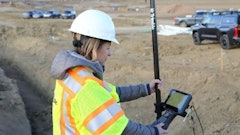
Our employees are the most valuable assets we have in construction. They are also the most difficult to lead. You manage a project, a piece of equipment, even the work process of your specialty but you lead your people. Herein lies the challenge as a contractor or construction leader.
Leading many of today’s construction workers requires a lot more effort than in years past, so say many owners and leaders. In this series we will begin to lay out many effective strategies about how to lead your people based on a helpful identification “tool.” First, let us define who these workers are as identified by the manner in which they approach work.
Understanding the three types of workers
In my efforts over the years working with contractors and leaders of all construction specialties and company size, I have discovered that all of us are working with the same types of people. For sure, all workers have differing degrees of job skills, experience and “like-ability.” But, what I found insightful when observing their individual work attitude, work ethic and work preparedness was the wide span among workers. Oh my goodness, do we have some interesting factors at play on this medium of leadership.
Studying these three key factors — an employee’s work attitude, work ethic and work preparedness — I discovered that there were three primary categories of workers. Let’s get a better understanding as to who our workers are based on their work attitude, work ethic, and work preparedness.
The Thoroughbred Worker (TW)
The first category of worker I call the Thoroughbred Worker (TW). This is the worker that is more often than not early to work, the last to leave and one of your most dependable workers. The TW is responsible, accountable, does what he says he is going to do, and provides honest and helpful feedback and insight. He or she is not necessarily the smartest employee or best “crafts-person” you have but he is honest, gives you more than a day’s effort of work, and “connects the dots” to what is important and needed. Give the Thoroughbred Worker the general idea for a needed effort and he’s got it. Again, the TW may not be your best technical worker but he is most likely that worker upon whom you depend for leadership, quality focus and safety.
Based on studies completed by the Center for Construction Innovation and Development (CCID), a construction industry research group, we have found that Thoroughbred Workers represent between 17% to 25% of the workforce. Therefore, the smaller sized contractor with less than 10 employees will seldom have more than one or two Thoroughbreds. (Larger contractors should “do the math.”)
Any contractor who does have more than the estimated percentage of TWs should count themselves fortunate indeed and consider paying these TWs accordingly to maintain their employment. Trust me, your competition knows who your Thoroughbred Workers are and will try to pirate them away.
The Fence-Sitter Worker (FSW)
The second category of worker I’ve christened the Fence-Sitter Worker. The FSW is programmed to do what she is specifically asked to do…nothing more, but nothing less. Fence-Sitter Workers are methodical workers, moving through each and every step that they have been instructed and trained to perform, exactly how they have been trained. In short, they will appear at times to almost be watching and waiting to see what direction the wind is blowing before making a commitment one way or another.
While they are responsible and accountable for specifically what they are directed to perform, they have been known to complete their work and stand by and watch others performing work, not thinking about asking if they can provide any assistance. They will wait till they are asked before ever doing something outside their own personal scope of work. The FSW is not lazy but just does not initiate offering her services; she will wait to be asked.
Does the Fence-Sitter Worker show up to work? Every day…BUT not more than one minute earlier than she has to clock in and she is often the first worker walking to her vehicle at exactly quitting time. Don’t even think about asking her to volunteer for OT on the weekend; she’s got things to do at home.
Give the Fence-Sitter Worker instructions on Monday and you will most likely have to repeat those instructions again Tuesday, probably Wednesday, and just when you think she’s got it…yep, you have to explain things again on Thursday. Again, Fence-Sitter Workers are not lazy but they will not exactly impress anyone with their great speed for performing work or their overt enthusiasm while at work.
The FSW style of work is primarily methodical, by-the-book, and “stay within the lines,” but FSWs are at work every day. The good news on the FSWs is that they both need and respond to good leaders. They can be coached!
The CCID findings show that Fence-Sitter Workers make up 55% to 65% of the workers. They are literally the “backbone” of most construction companies but need leadership, oversight, support and patience.
The Carp Worker (CW)
Our third category of worker, based on the approach to the job, is known as the Carp Worker (CW). The CW is known as the one who disagrees with just about everyone, including you, on just about any issue or topic. They appear to always “zig” when you “zag.”
The nickname I’ve heard most from contractors and construction leaders in my workshops when I describe the Carp Worker is “bottom feeder.” This feedback is most often said while the leader is laughing. (I think we laugh sometimes to cover the reality of such a time-wasting worker who we still have employed!)
The hardest thing to accept about Carp, however, is that many of these individuals are bright people, some are even among your better craftsman…technically. They know that they are good; you know that they are good; the problem is that they know…that you know…that they know they are good! Even this is confusing, right?
Now, the range of CW types can certainly extend from those that are technically pretty good to those workers who simply have a bad attitude and are not good craftsman in any area of their job. While we’ll address the manner in which you should lead the Carp Worker in a later article, let me encourage you now that when leading the Carp you must be clear, consistent and committed to holding them accountable to company processes, procedures and compliance issues. If you let down on this effort you will surely allow them greater room to sabotage or poison the work efforts and performance of your other workers.
Now the Carp Worker only makes up 17% to 25% of your workforce, but you can already see from the amount of time spent just on this style that they take up a lot more of your time and energy. I have found in construction companies that there is a correlation between the number of Carp Workers the company employs and the commitment to principles, values and processes the same company maintains. The more you hold all of your workers accountable, the more vision and communication that is practiced in your company — and the greater positive and proactive leadership practiced — the fewer Carp Workers you will have and the more productive the CWs you do have will be. Provide poor and inconsistent leadership and your current “school of Carp” will bring their Carp friends to join your company.
Ok, now that I’ve laid out a brief overview of each of the three work styles found in construction companies today, let me provide you with some brief techniques to move your workers forward in their daily tasks. We'll explore each worker style in much more detail in future articles so use the following techniques to help you lead your workers in the short term.
When leading your Thoroughbred, Fence-Sitter, or Carp workers, always remember to:
- Clearly communicate what the daily work schedule is and what is expected by the end of each workday.
- Confirm that all workers know and understand what their role is and what tasks they will be performing.
- Always ask your workers if they have any questions before beginning the day’s work efforts.
- For those workers who you know are “work challenged,” follow-up with them in the first 15 to 30 minutes each morning to make sure they are on track.
- Practice follow-up three or four times per day to make sure that workers are maintaining the needed direction.
- Bring your workers together at the end of the workday and review the day’s effort:
- Did we reach our goal?
- What did we learn?
- What can we “stage” for tomorrow?
- Are there any changes for tomorrow that we need to make?
- Is everyone going to be at work the next day? Are there any equipment or tool changes needed?
Practice the six techniques consistently and with all of your workers. The techniques are critical for everyone and should prove to be part of your normal, maybe even basic approach to leading workers in general.



















